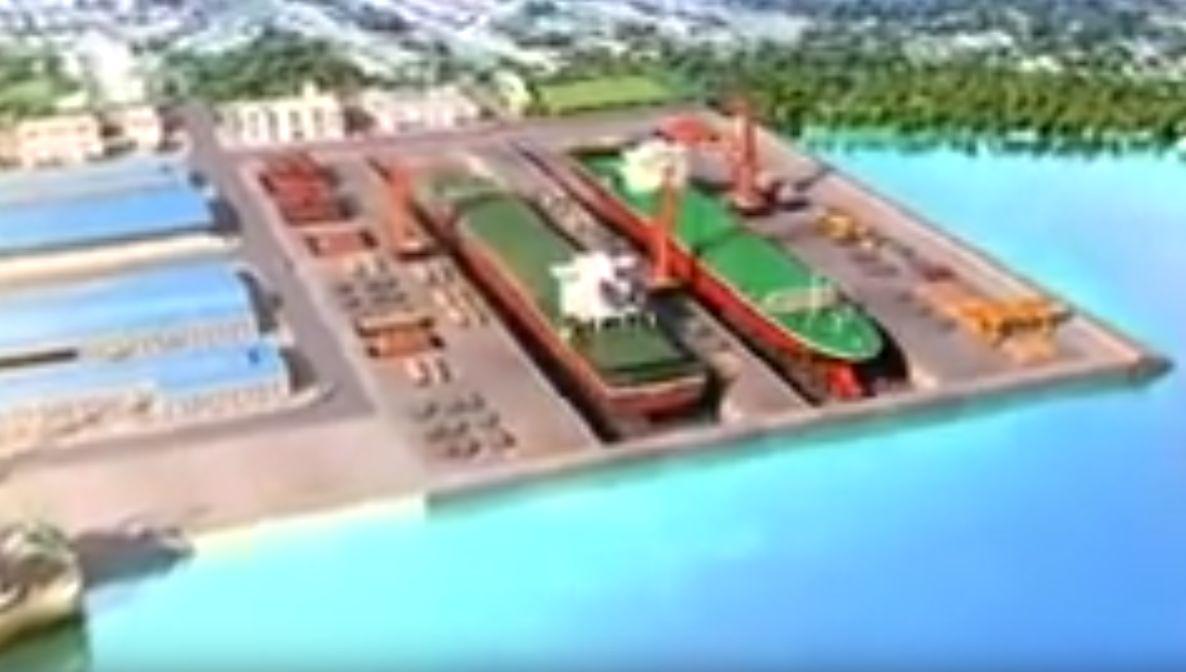(Trinidad Guardian) T&T’s debt to China has jumped from $2.2 billion last year to $6.2 billion after Government partnered with China again on two new projects.
That new figure includes the existing debt inherited from the former administrations and now includes the $3 billion for newly-proposed La Brea Dry Dock facility and the $1 billion plan for Phoenix Park.
Prior to the 2019 Budget presentation, Finance Minister Colm Imbert said T&T owes the People’s Republic of China $2.229 billion.
To date, there has been very little information in the public domain about these deals.
Many people have expressed concerns that if T&T is not careful it may run the risk of falling into a crouching economic tiger, hidden dragon debt trap similar to several countries who were unable to repay China, such as Sri Lanka, which handed over its strategically located US $1.3 billion Hambantota port to China.

After lending billions of dollars to heavily indebted Djibouti, China now has its first overseas military base in that strategic country and various nations throughout the world who have bartered their countries’ minerals, oil, and land for Chinese loans. China is now proposing to take over the Kenneth Kaunda International Airport should the Zambia Government fail to pay back its huge foreign debt on time.
A total of 68 countries are involved in China’s ambitious US$4 trillion Belt and Road Initiative, through which China seeks to boost trade and stimulate economic growth across Asia and beyond. It hopes to do so by building massive amounts of infrastructure, roads, port facilities, new government buildings, bridges connecting it to countries around the globe, financed by Chinese government donations, aid, loans, and investments.
Critics say China’s plan is to gain geopolitical influence, by engaging in “debt-trap diplomacy”; encouraging indebtedness in cash-strapped countries and then to take over strategic national assets when debtors default on repayments.
On Friday, United States president Donald Trump met with selected leaders within Caricom and one of the topics of discussion was expected to be the investments from China into the Caribbean.
However, Trump and the Caribbean leaders did not discuss Chinese investment issues.
According to international reports, at that meeting Trump instead pledged US investment with the five Caribbean leaders who sided with the United States in backing Venezuelan opposition leader Juan Guaido as head of state.
On Friday, the U S president met with St Lucia Prime Minister Allen Chastanet, Dominican Republic President Danilo Medina, Jamaica Prime Minister Andrew Holness, Haiti President Jovenel Moise and Bahamas Prime Minister Hubert Minnis at his private Mar-a-Lago estate in Palm Beach, Florida.
According to White House statement, Trump promised that a high-level delegation from the Overseas Private Investment Corporation, the US development lender, would visit each of the five nations in the next 90 days.
While Trump steered clear of the Chinese investment, the local arm of the US Embassy brought in an expert in the field of Chinese migration of investments to speak to several local business bodies over the past week.
Dr Evan Ellis is a research professor of Latin American Studies at the US Army War College (USAWC) Strategic Studies Institute (SSI) and has been studying Chinese investment in the Caribbean and Latin America for the past 16 years.
In an interview with Guardian Media on Friday, Ellis warned the Government to be “cautious” before signing any deals for investments.
He spoke specifically of the La Brea Dry Dock and Phoenix Park Industrial Estate.
“Again, it’s the Government’s money but it’s the people’s money that’s being spent and the questions that raises some concern for me is whether or not that is a competitive facility based on where the major shipping lines, such as Mediterranean Shipping or Cosco would prefer to do their dry dock,” he said.
“I would raise it as an open question and not necessarily as a conclusion but it’s very important that the Government do a good business case if it does invest $500 million of the people’s money.”
With regard to the proposed investment into Phoenix Park, Ellis said that after following Chinese activities for 16 years, there are questions to be raised.
“I understand that there is a desire for the generation rapidly of jobs, the problem though is on the one hand the Government is talking about spending the people’s money which would go upfront to the Chinese firm, Beijing Construction and Engineering Group (BCEG),” he said.
Ellis said that there was a presumption of confidence on the promises made in the agreement, that BCEG will bring in 60 other companies and produce thousands of jobs.
“The Government needs to make sure those promised jobs come,” he said.
Ellis said he worked with companies in El Salvador and Panama where the contracts and agreements were not scrutinised enough and it left those two nations financially exposed.
“It is particularly important that before the Government spends $1 billion of the people’s money they need to make sure those companies are coming in and what would be the conditions that they expect from the Government to make that attractive,” he said.
Guardian Media contacted the Chinese embassy for clarification on the range and scope of the investment in the country but was told that the embassy had not received authorisation from its head office to give out that data.
This was the same response the Embassy gave several times when Guardian Media sought more information.
On March 13, Guardian Media contacted Trade Minister Paula Gopee-Scoon requesting a meeting and more information on the Chinese investments. She asked for a meeting to be set up for March 19. She also directed Guardian Media to set up the meeting with her assistant. Guardian Media also sent questions to the assistant but received no response. On Tuesday, Guardian Media contacted the Minister and her assistant to follow-up and was once again directed to put off the meeting until March 26. Gopee-Scoon is expected to respond to questions then.




